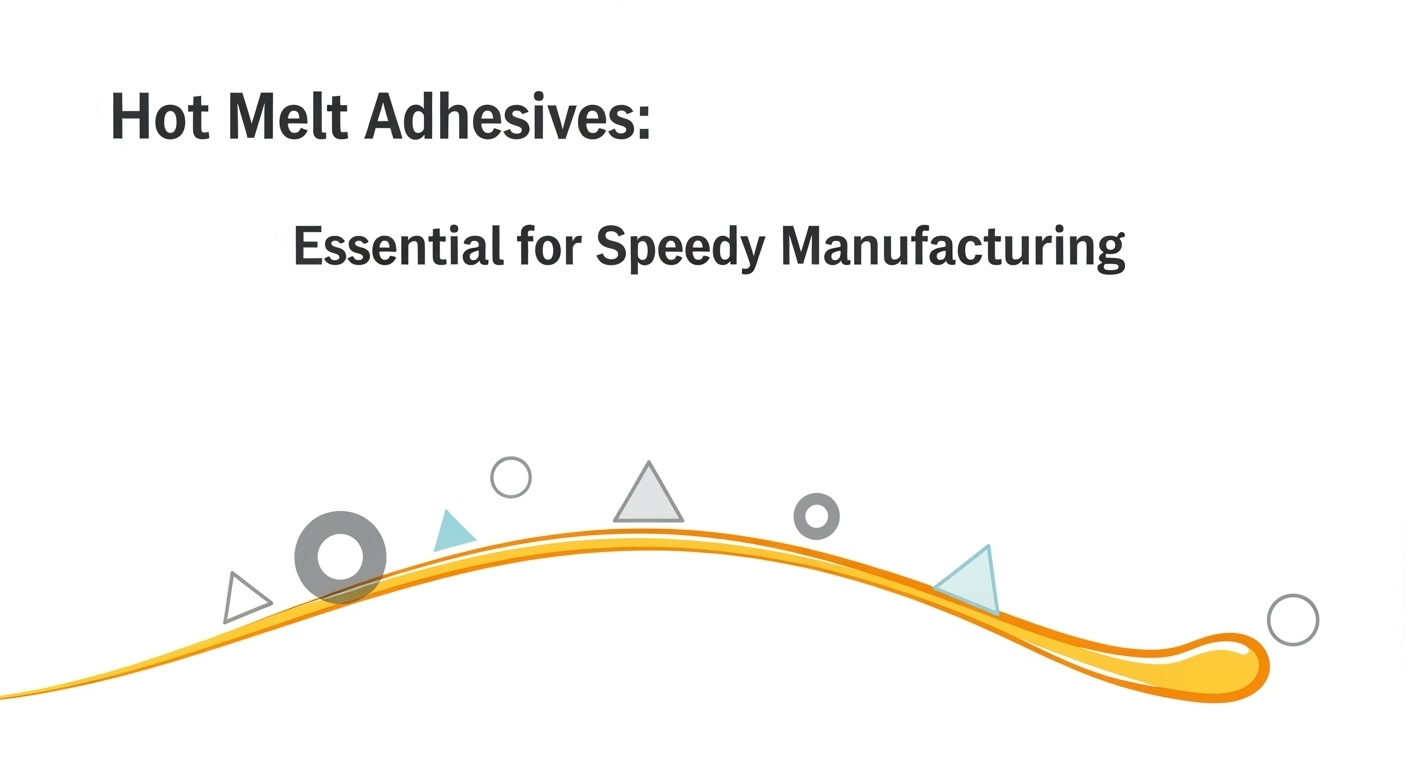
Hot Melt Adhesives Overview
Types of Hot Melt Adhesives
Importance in Manufacturing
Adhesive Application Methods
Latest Trends in Adhesives
Strategies for Effective Use
Future of Hot Melt Adhesives
Frequently Asked Questions (FAQ)
Hot melt adhesives are widely used in modern manufacturing thanks to their rapid setting speed, strong bonding capabilities, and versatility across materials. These adhesives are applied in a molten state and solidify within seconds as they cool, making them ideal for high-speed automated production. Because they require no curing agents or long drying times, hot melt adhesives help manufacturers streamline processes, maintain consistent product quality, and reduce production bottlenecks.
Hot melt adhesives are available in several distinct formulations, each designed for specific performance needs:
Ethylene-Vinyl Acetate (EVA):
Commonly used in packaging due to its balance of strength, flexibility, and cost-efficiency.
Polyolefin Hot Melt:
Known for excellent adhesion to low-surface-energy plastics such as polypropylene and polyethylene, often used in automotive and household goods.
Polyamide Hot Melt:
Provides strong resistance to oils, chemicals, and varying temperatures. Frequently used in electronics, filters, and textile bonding.
Pressure-Sensitive Hot Melt:
Remains tacky after application, allowing repositioning—useful for labeling, tapes, and removable bonding needs.
Choosing the right formulation ensures optimal performance based on the materials and production conditions.
Hot melt adhesives play an essential role in maintaining high productivity in manufacturing environments. Their fast bonding speed supports continuous production without delays, while their ability to adhere to diverse substrates improves design flexibility. Additionally, because hot melt adhesives offer consistent performance and require minimal energy during application, they help manufacturers balance efficiency, quality, and sustainability.
Various application methods are used to optimize hot melt adhesive performance:
Roll Coating
Delivers even coverage over larger surfaces and is suitable for lamination processes.
Spray Application
Enables controlled application on irregular or three-dimensional surfaces, reducing excess material use.
Extrusion / Bead Application
Ideal for high-speed production lines, offering precise, consistent adhesive placement.
Selecting the appropriate method increases bonding reliability, minimizes waste, and enhances overall production consistency.
Several significant trends are shaping the hot melt adhesive industry:
Eco-conscious Formulations:
Increased development of low-VOC, bio-based, and recyclable adhesive systems.
Enhanced Performance Grades:
New formulations designed for improved heat resistance, reduced odor, and extended durability.
Automation-Friendly Adhesives:
Adhesives optimized for robotic application, automated dispensing systems, and advanced quality control.
Smart Materials Integration:
Adhesives designed to work with sensors or temperature-responsive systems in automated factories.
These trends reflect the shift toward sustainability, automation, and long-term performance.
To maximize the benefits of hot melt adhesives, manufacturers should:
Match the adhesive to the substrate material to ensure long-term bonding reliability.
Optimize temperature settings during application to maintain ideal viscosity and adhesion quality.
Use appropriate application equipment—roll coater, spray gun, or extruder—based on the production workflow.
Train operators to handle equipment correctly, ensuring consistent output.
Maintain proper storage conditions to prevent premature degradation or contamination.
These practices ensure efficient, dependable bonding that supports continuous production.
The future of hot melt adhesives is defined by innovation, sustainability, and integration with digital manufacturing. Key developments include:
More bio-based formulations to reduce dependence on petrochemical ingredients.
Advanced durability performance, including higher thermal stability and chemical resistance.
Adhesives compatible with smart manufacturing and Industry 4.0 systems.
Growing use in new markets such as lightweight composites, electric vehicle components, and high-performance packaging.
As industries evolve toward cleaner and more efficient production, hot melt adhesives will remain central to modern manufacturing workflows.
What are hot melt adhesives?
Thermoplastic adhesives applied in a molten state that solidify rapidly, forming strong bonds used across manufacturing industries.
What types of hot melt adhesives exist?
Common types include EVA, polyolefin, polyamide, and pressure-sensitive hot melts—each tailored for different substrates and performance needs.
Why are they important in manufacturing?
They provide rapid bonding, support high-speed production, and maintain consistent quality with minimal curing time.
What are common application methods?
Roll coating, spray application, and extrusion/bead application are widely used depending on the production line.
What are the latest trends?
Eco-friendly formulations, automation-ready adhesives, enhanced durability, and integration with smart manufacturing.
How can manufacturers use them effectively?
By selecting the correct adhesive type, optimizing application temperature, training staff, and maintaining proper equipment and storage conditions.
What does the future look like for hot melt adhesives?
Expect advancements in sustainability, performance, and compatibility with automated manufacturing systems.